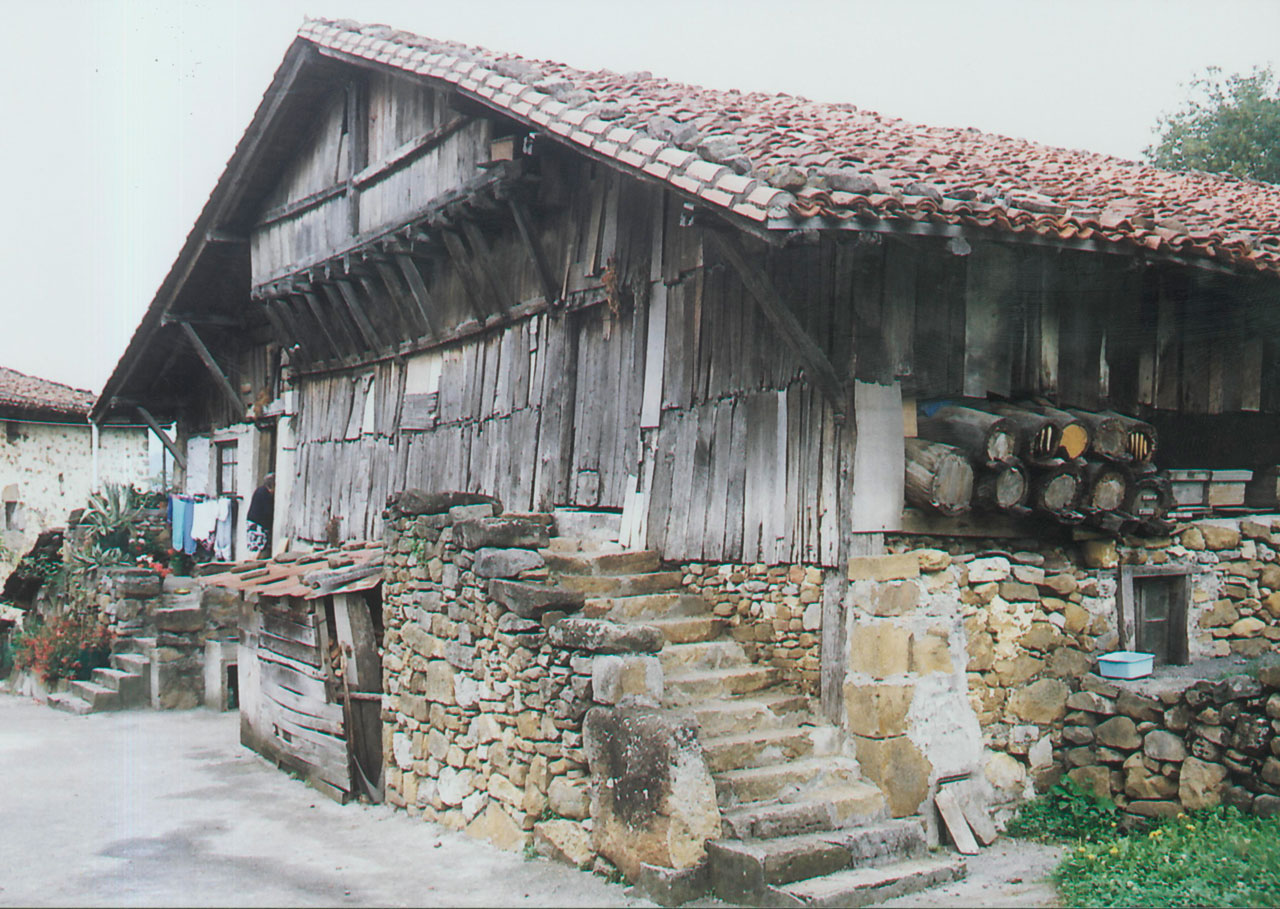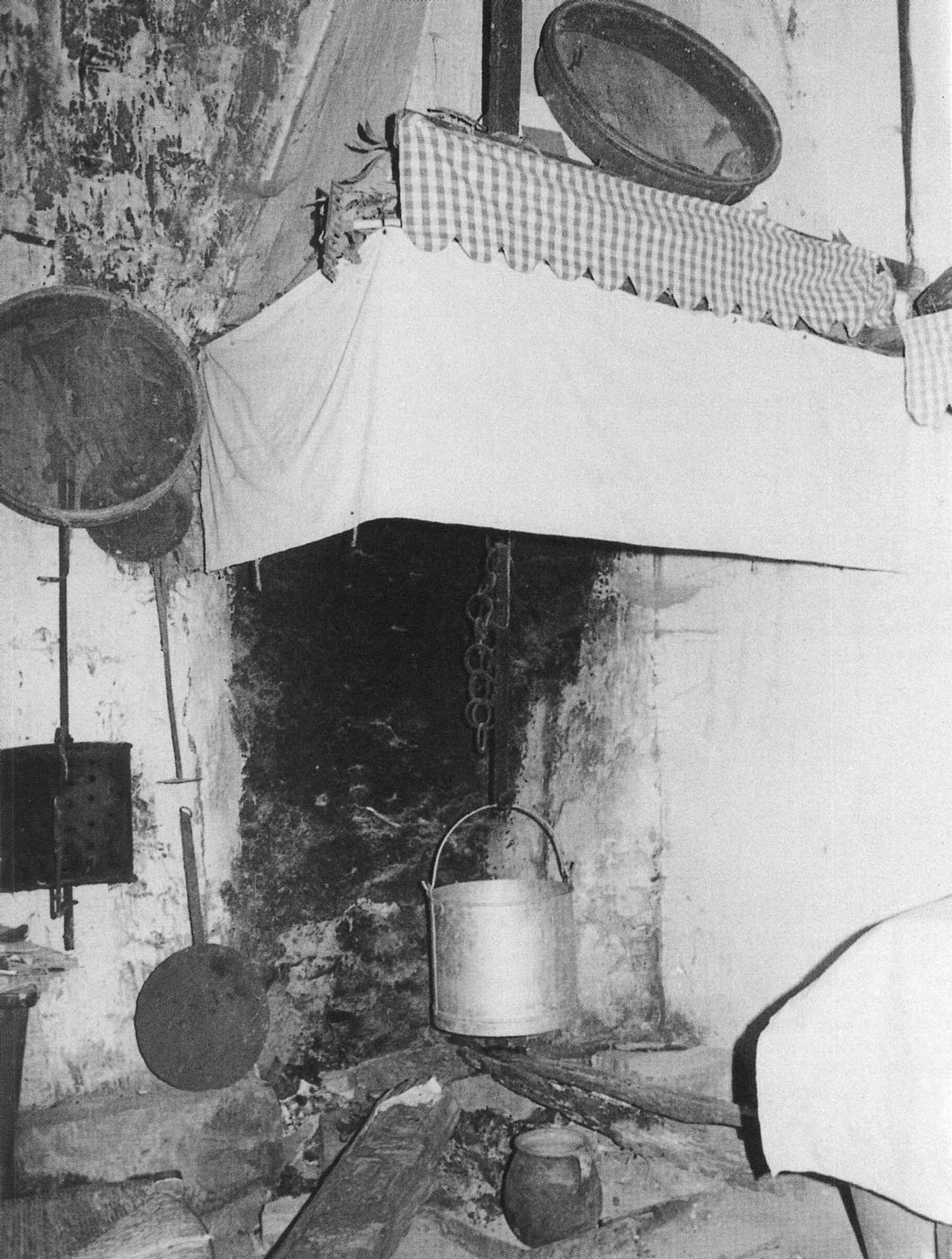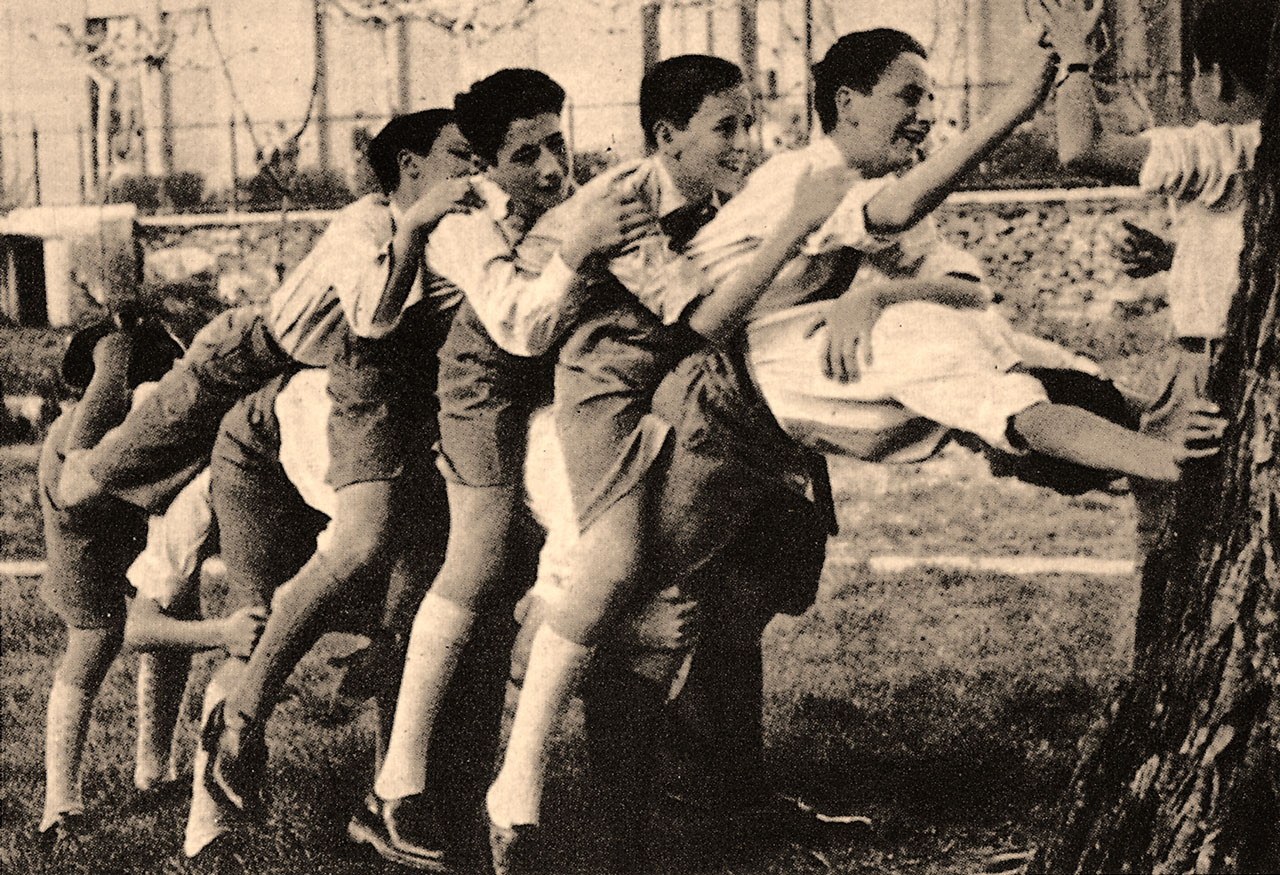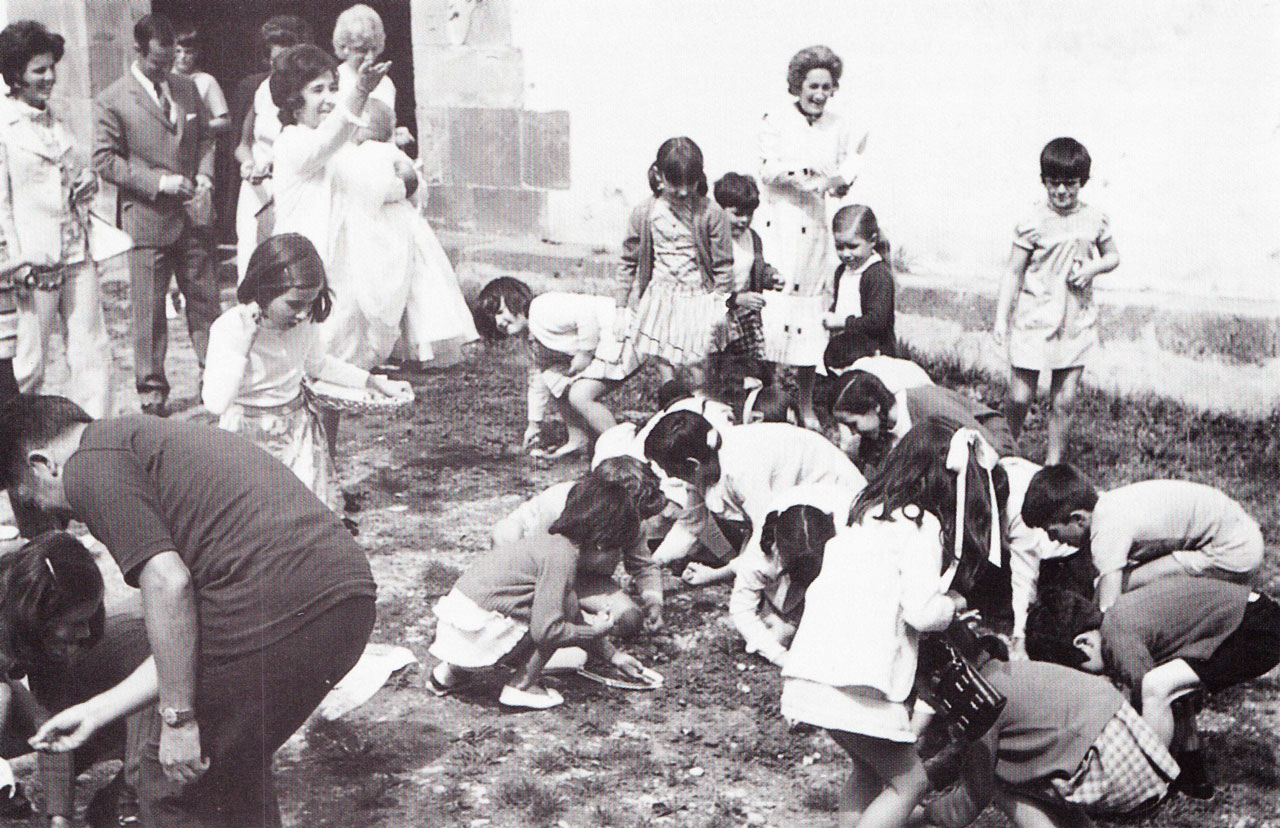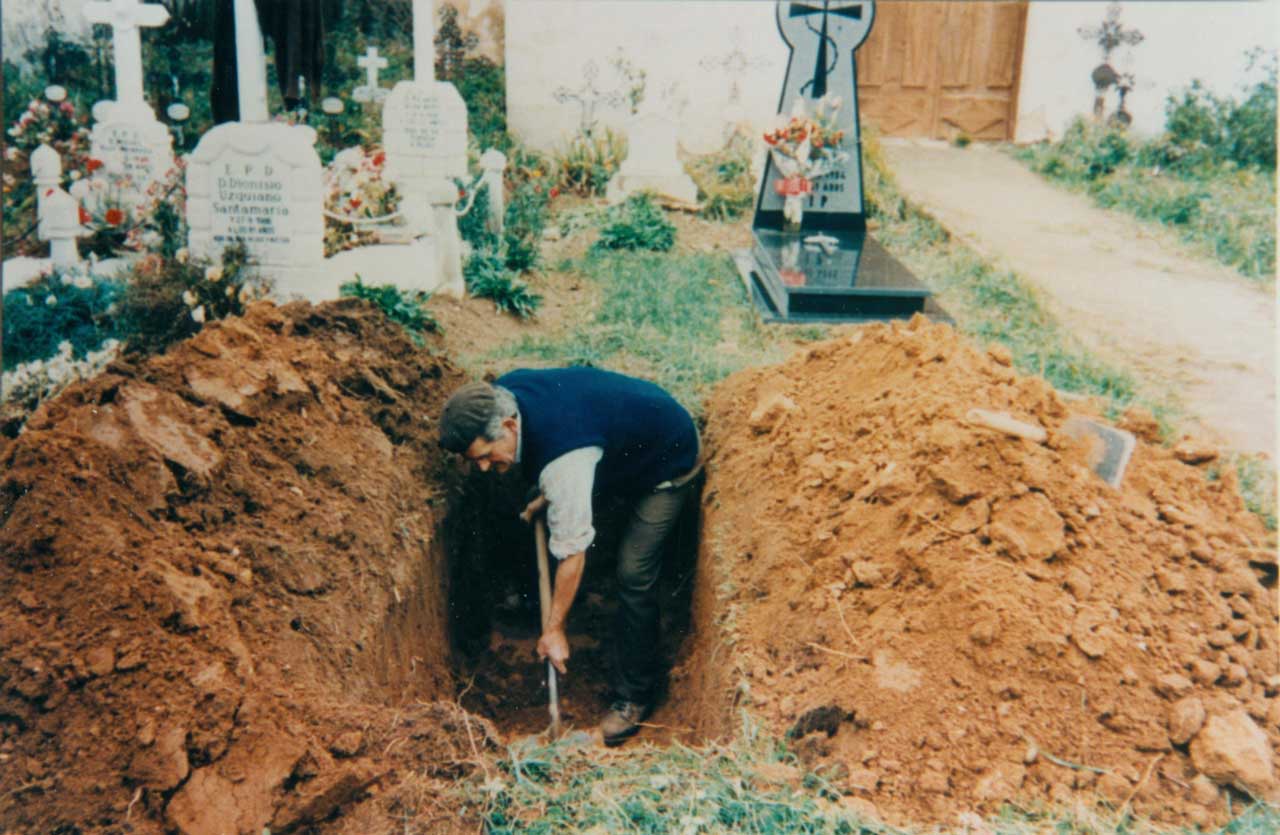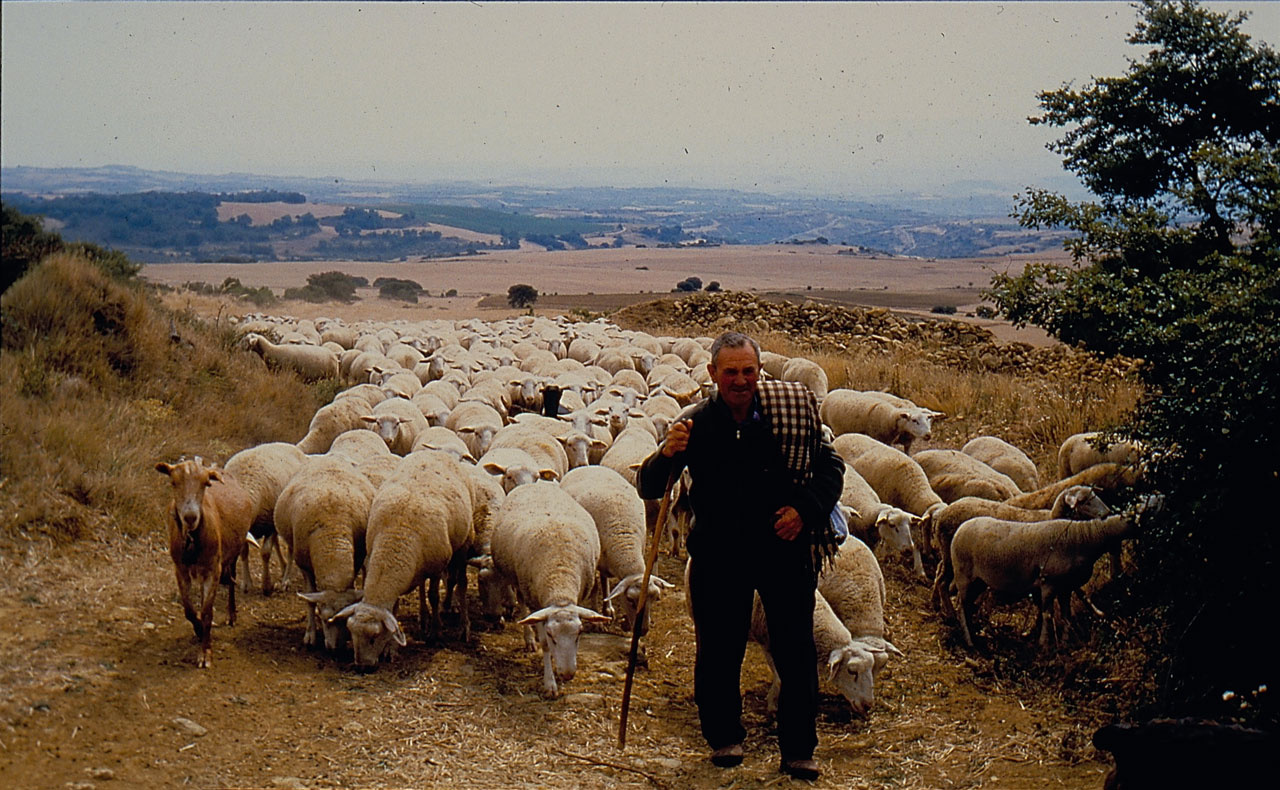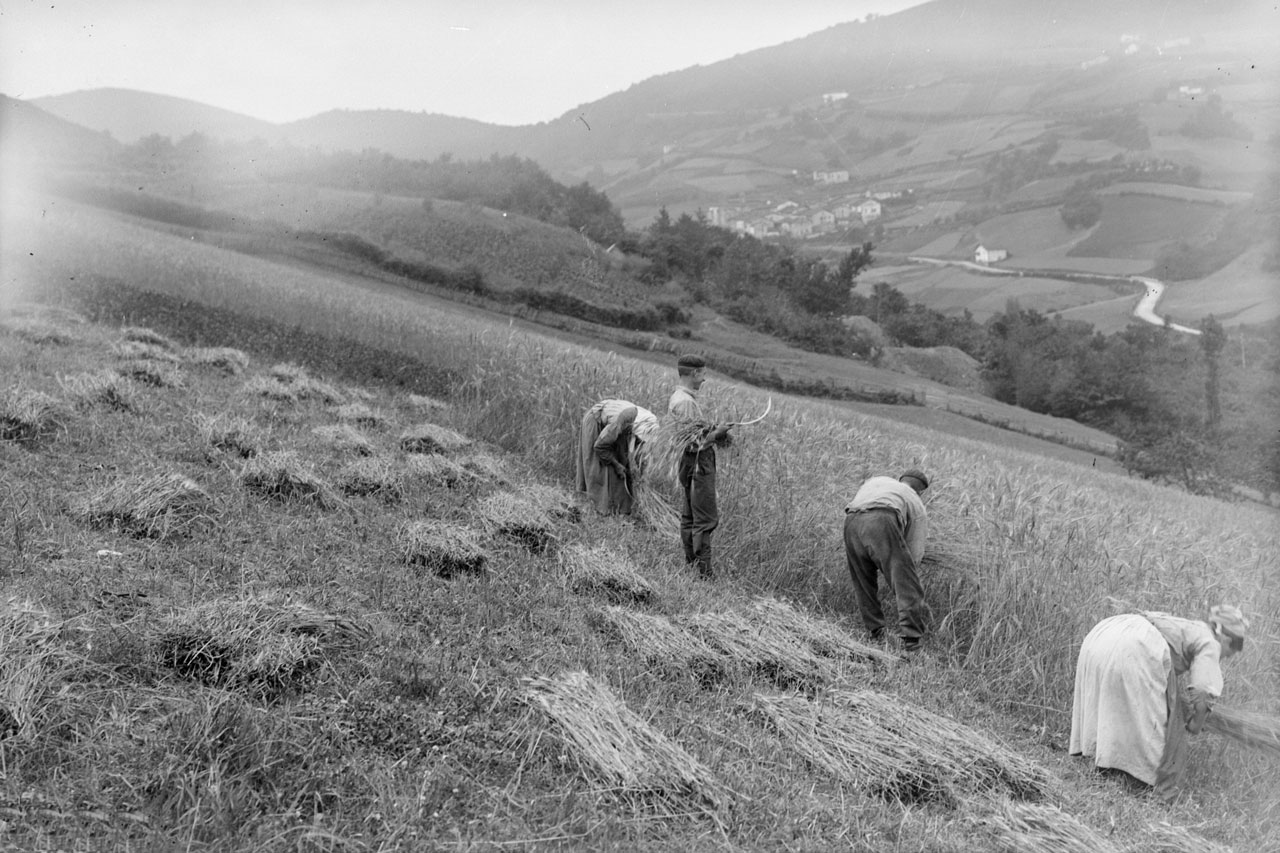Diferencia entre revisiones de «Main Page/en»
De Atlas Etnográfico de Vasconia
| Línea 12: | Línea 12: | ||
==[nav]== | ==[nav]== | ||
| − | ===[casa| | + | ===[casa|House and Family|/atlas/casa.png]=== |
| − | ===[alimentacion| | + | ===[alimentacion|Diet|/atlas/alimentacion.png]=== |
| − | ===[juegos| | + | ===[juegos|Children’s Games|/atlas/juegos.png]=== |
| − | ===[medicina| | + | ===[medicina|Medicine|/atlas/medicina.png]=== |
| − | ===[nacimiento| | + | ===[nacimiento|Birth|/atlas/nacimiento.png]=== |
| − | ===[ritos| | + | ===[ritos|Funeral Rites|/atlas/ritos.png]=== |
| − | ===[ganaderia| | + | ===[ganaderia|Livestock Farming|/atlas/ganaderia.png]=== |
| − | ===[agricultura| | + | ===[agricultura|Agriculture|/atlas/agricultura.png]=== |
==[libros]== | ==[libros]== | ||
Revisión del 17:53 28 ene 2020
Munekogoikoa Farmhouse. Neighbourhood of Urigoiti (Orozko-B), 1994. Source: Edurne Romarate, Etniker Euskalerria Groups.
House and Family in the Basque Country


House and Family in the Basque Country
The oldest farmsteads are those where the use of timber was pivotal, both for its internal and external structure.
Family Diet in the Basque Country


Family Diet in the Basque Country
Sueteko laratzak jakiten dau etxeko barri. People show their true colours at home.
Leapfrog jumping. Source: Iñigo Irigoyen, José. Folklore Alavés. Vitoria-Gasteiz: Chartered Government of Álava, 1949.
Children’s Games in the Basque Country


Children’s Games in the Basque Country
Astoka One or more participants bend down in a position that is usually called a frog and the others jump over them.
Traditional Medicine in the Basque Country


Traditional Medicine in the Basque Country
Osasuna, munduko ondasuna. The first wealth is health.
Rites from Birth to Marriage in the Basque Country


Rites from Birth to Marriage in the Basque Country
Haurraren jaiotza, etxerako poza. A house without children is a flowerpot without flowers.
Funeral Rites in the Basque Country


Funeral Rites in the Basque Country
Hildakoari hobia eta biziari ogia. The dead to the grave and the living to the roll.
Shepherd from Lanciego (A) on the climb to Toloño, 1996. Source: José Ángel Chasco, Etniker Euskalerria Groups.
Livestock Farming and Shepherding in the Basque Country


Livestock Farming and Shepherding in the Basque Country
The Mediterranean watershed of the Basque Country was, and to a large extent is, characterized by the importance of the commons, the communal character of their exploitation by associations and brotherhoods comprising multiple municipalities still persisting today.
Agriculture in the Basque Country


Agriculture in the Basque Country
Satsitu ta jorratu ta garia hartu. Spreading manure and weeding and harvesting wheat.
